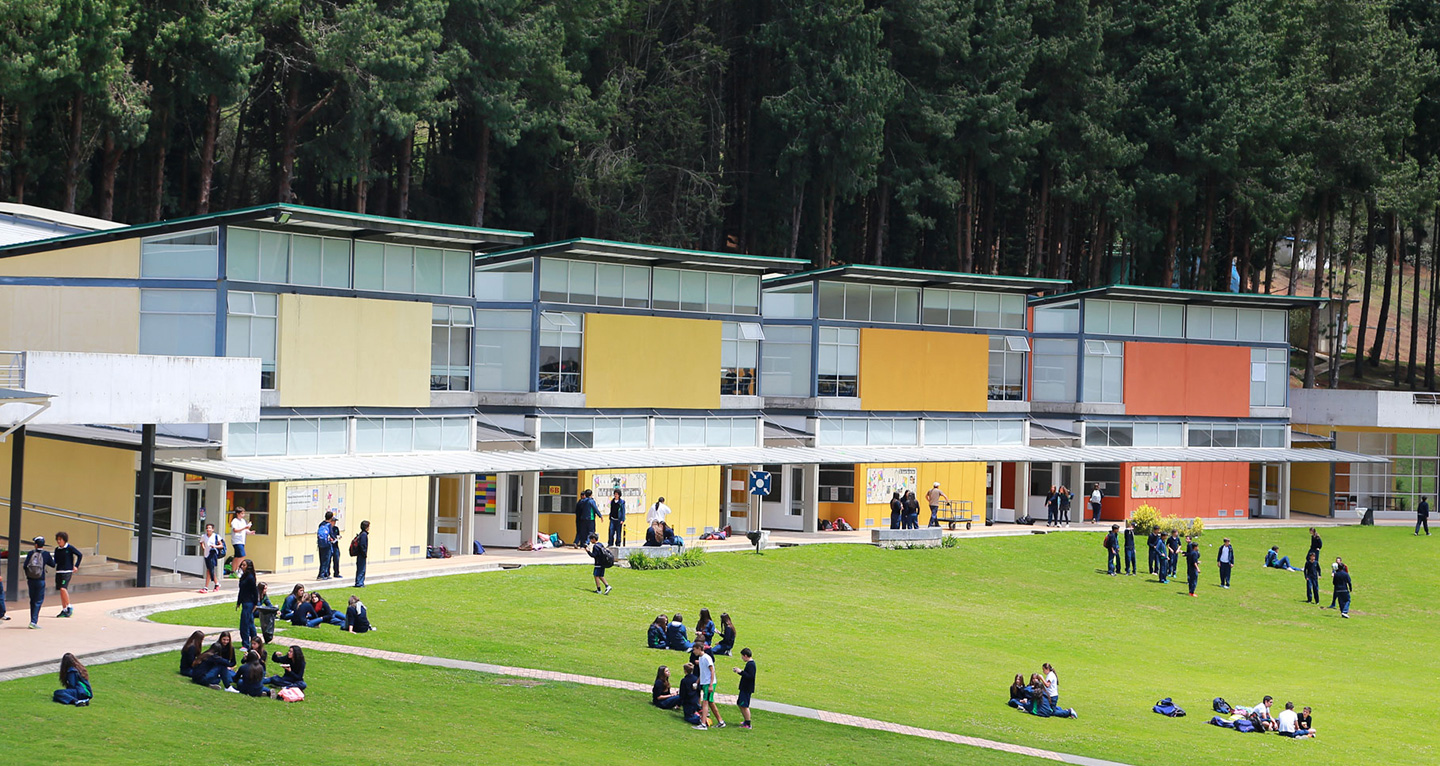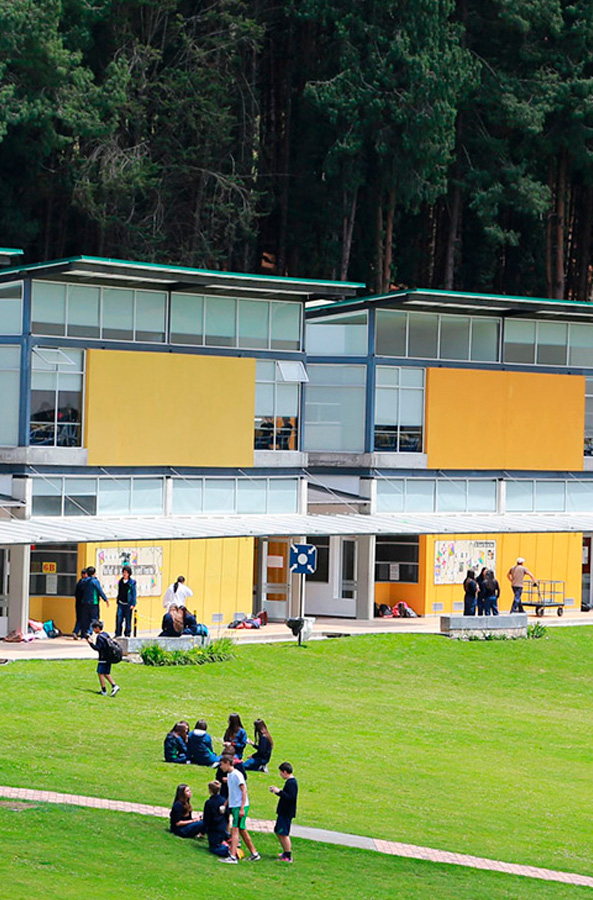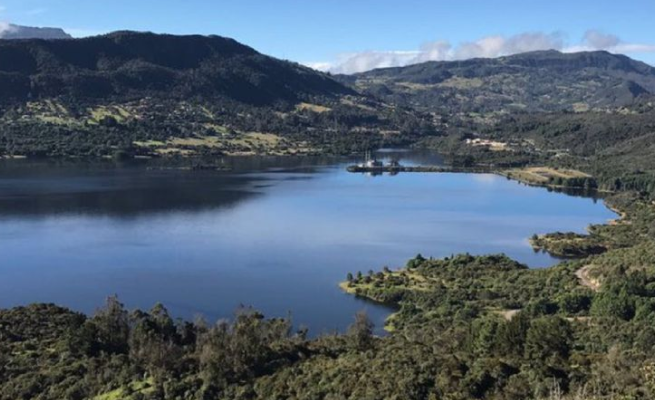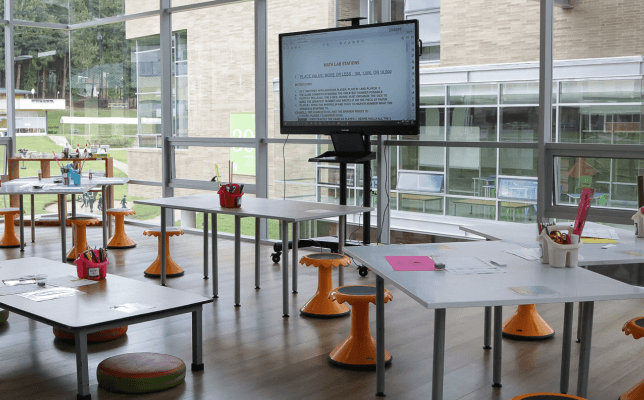The country setting among the mountains with a reservoir, native forest and ecological trail inserts us in nature in a privileged way.
Located in a valley in the village of El Salitre, among the mountains of the municipality of La Calera, is the Los Alcaparros campus, a place that includes areas of native Andean forest and an artificial reservoir.
Each of the buildings is harmoniously adapted to the ecosystem, which means that any place in the school can become a “classroom”, a receptive space conducive to learning.
The interior environments of the buildings are directly connected to the landscape and the corridors are wide, not only for circulation but also for studying, working in groups and resting, making them places where collaborative work is encouraged in spaces with direct connection to the woods, the lake and green areas.
Everything in Los Alcaparros, the campus, its buildings, the times with teachers and peers, as well as the forms of recreation, responds to the concept of “Responsive Spaces” to promote an effective pedagogy that understands the new ways of learning, creating and producing.
Green Alcaparros
We care for the environment where we are. That is why we have sustainable practices where waste management, recycling and reuse of materials are part of the daily life of our students.
Our campus has adopted several sustainable construction strategies in areas such as water care and energy saving, among others.
Classrooms
Large spaces with natural light and easy access to the outdoors created to encourage knowledge.
The architecture must be at the service of active learning. The classrooms are large, with movable and modular furniture, organized in such a way that they are welcoming, friendly and give children the security to develop their initiative and autonomy.
Outdoor Classroom
Green areas, forests and natural spaces designed to arouse curiosity and stimulate learning.
Arts
The art, ceramics, land art, carpentry, technology, textile and fashion workshops and salons are spaces where creativity is breathed, special techniques are learned and aesthetic proposals are made that combine the sphere of beauty with that of art and expression.
Collaborative Spaces
Places to connect and enhance the talents of our students through teamwork in small groups. These “collaborative spaces” allow to focus the work around a question, problem, competence or skill, encouraging, as the name suggests, collaborative work and close support from the teacher.
Libraries
Libraries are spaces designed to cultivate creativity, knowledge and curiosity. Based on stories, writing, art, music and debate workshops are held, which promote personal development and strengthen the social fabric.
Makerspaces - STEAM Lab
Collaborative workshops where students gain hands-on experience with new technologies and innovative processes to design and build projects. They provide a flexible environment where learning becomes physical by applying science, technology, math and creativity to solve problems and build things.
Tech Labs
Spaces designed to explore and discover what our universe is made of.
Equestrian Area
A space where children, horses and nature are integrated. The Equestrian area has four stables, several horses, an indoor arena and a grass track. Students develop skills in disciplines such as Vaulting, Galloping and Equine Therapy.
Music
Music is heard throughout the campus from preschool through high school since the spaces are not concentrated in one building. There are group and individual singing lessons, and a wide variety of instruments as well as rock, jazz, and big band groups
Everything at Alcaparros, the campus and its buildings, the times with teachers and classmates and also the ways of recreation respond to the concept of “Responsive Spaces”. The traditional pillars of the organization of school life such as the structuring of time, the forms of grouping and the distribution of spaces are adapted to the ages, needs and forms of relationships of the students.















